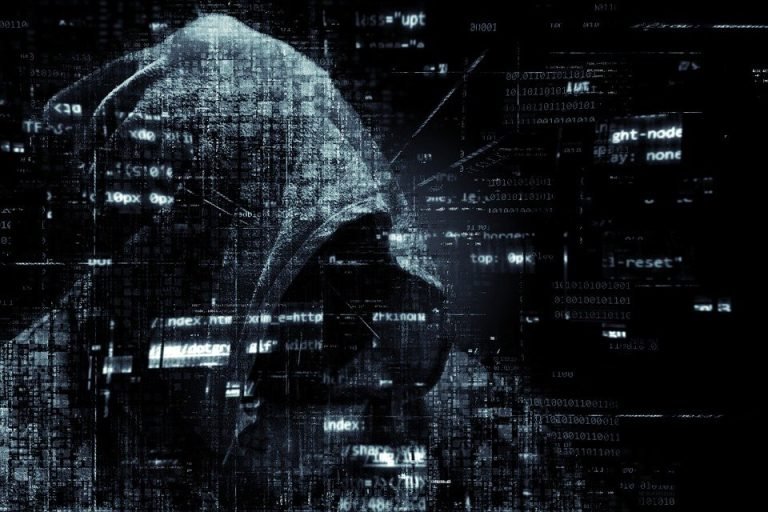How To Track Down The Bad Guys Explained By An Ethical Hacker : At the point when a cyber attack happens, moral hackers are brought in to be computerized investigators. In a specific sense, they resemble consistent police investigators on TV. They need to seek PC frameworks to discover ways a gatecrasher may have come in – an advanced entryway or window left opened, maybe. They search for confirm an attacker left of passage, similar to an electronic impression in the soil. What’s more, they attempt to figure out what may have been duplicated or taken.

Understanding this procedure has turned out to be more imperative to general society in light of late occasions in the news. In October 2016, the U.S. formally said Russia was attempting to humiliate regarded political figures and meddle with the U.S. presidential decision process. In particular, the Obama organization formally pointed the finger at Russia for hacking into the Democratic National Committee’s PC frameworks. The announcement relied on the investigative abilities of American moral hackers working for both privately owned businesses and government offices.
Yet, how do individuals find hackers, making sense of what they have done and their identity? What’s included, and who does this kind of work? The appropriate response is that moral hackers like me dive profound into computerized frameworks, looking at records logging clients’ movement and deconstructing pernicious programming. We frequently collaborate with knowledge, legitimate and business specialists, who convey outside ability to include setting for what we can discover in the electronic record.
Also Read This : – Most Popular Front End Framework Of Javascript (React)
Distinguishing an interruption
Normally, an examination starts when somebody, or something, recognizes an unapproved interruption. Most system executives set up interruption discovery frameworks to enable them to watch out for things. Much like a caution framework on a house, the interruption location programming watches particular zones of a system, for example, where it associates with different systems or where delicate information are put away.
When it spots uncommon action, similar to an unapproved client or a shockingly high measure of information activity to a specific off-site server, the interruption recognition framework cautions arrange chairmen. They go about as cybersecurity people on call – like advanced firefighters, cops and paramedics. They respond to the alarm and endeavor to make sense of the end result for trigger it.
This can incorporate an extensive variety of attacks, from irregular, unstructured invasions by people and little gatherings to efficient and exactness focused on strikes from hackers supported by government organizations. Any of them can set off an interruption caution in an assortment of ways.
The immediate reaction
Ordinarily, the underlying examination focuses on gathering, sorting out and investigating a lot of system information. PC organizing hardware and servers keep records of who associates, where the association originates from and what the client does on the framework.
Contingent upon what that investigation appears, the overseer might have the capacity to settle the issue immediately, for example, by keeping a specific client from signing in, or hindering all system movement originating from a specific place. In any case, a more perplexing issue could require calling an advanced occurrence reaction group.

In a perfect world, each organization or association ought to have its own particular inward group or fast access to a group from outside. Most nations, including the U.S., have their own particular national reaction groups, frequently government representatives supplemented by private temporary workers with specific mastery. These groups will be gatherings of moral hackers who are prepared to research further or all the more difficult interruptions. Notwithstanding any self-trained abilities, these individuals regularly have extra understanding from the military and advanced education. Their most imperative mastery is in what is called “in the nick of time learning,” or making sense of how to apply their abilities to new circumstances on the fly.
They lead bigger scale advanced measurable request and break down noxious programming that may have been presented amid the attack. Commonly, these groups work to stop the attack and avert future attacks of that compose. The groups can, on occasion, chase down the attackers.
Ascribing an attack
Deciding the character or area of a cyberattacker is extraordinarily troublesome in light of the fact that there’s no physical confirmation to gather or watch. Modern hackers can cover their computerized tracks. In spite of the fact that there are various attribution methods, the best approach exploits more than one. These systems frequently incorporate looking carefully at any records or information abandoned by the attackers, or stolen and discharged as a feature of the invasion.
Reaction groups can break down the syntax utilized as a part of remarks that are generally inserted in programming code, as software engineers leave notes to each other or for future designers. They can review documents’ metadata to see whether content has been made an interpretation of starting with one dialect then onto the next.

For instance, in the DNC hack, American cyber specialists could take a gander at the particular documents distributed on Wikileaks. Those records’ metadata demonstrated that some of them contained content changed over from the Cyrillic characters of the Russian letter set to the Latin characters of English.
Specialists can even distinguish particular sociocultural references that can give pieces of information to who directed the attack. The individual or gathering who guaranteed obligation regarding the DNC hack – utilizing the name Guccifer 2.0 – asserted to be Romanian. In any case, he experienced considerable difficulties communicating in Romanian fluidly, recommending he wasn’t really a local. Furthermore, Guccifer 2.0 utilized an alternate smiley-confront image than Americans. Rather than writing “:)” Guccifer 2.0 just wrote “)” – forgetting the colon, suggesting that he was Eastern European.
Experienced cyber-agents construct an edge by following numerous huge dangers after some time. Much the same as with “cool cases” in standard police work, contrasting the most recent attack with past ones can some of the time uncover joins, adding pieces to the bewilder.
This is especially evident when managing what are called “progressed persevering dangers.” These are attacks that advance bit by bit, with exceptionally modern strategies unfurling over drawn out stretches of time. Regularly attackers specially craft these interruptions to abuse particular shortcomings in their objectives’ PC frameworks. That customization can uncover intimations, for example, programming style – or even decision of programming dialect – that join with other data to propose who may be capable.
The cyber-safeguard group has another preferred standpoint: While attackers normally work alone or in little gatherings and in mystery, moral hackers cooperate over the world. At the point when a sign develops in one examination, it’s basic for hackers to share that data – either openly on a blog or in an academic paper, or only straightforwardly with other known and put stock in specialists. Along these lines, we fabricate a group of confirmation and layers of involvement in reaching inferences.
All the time, a report from an attack examination will yield pieces of information or proposals, maybe that an attacker was Russian or was utilizing a console with Korean characters. Just when the conclusions are clear and certain will examiners straightforwardly denounce particular attackers. When they do, however, they regularly share all the data they have. That reinforces the believability of their decisions, helps other people recognize shortcomings or disappointments of rationale – and it imparts all that information to whatever is left of the group, making the following examination that substantially less demanding.
The most skilled hackers can keep in touch with self-eradicating code, counterfeit their web addresses, course their attacks through the gadgets of blameless victims and influence it to create the impression that they are in multiple nations without a moment’s delay. This makes capturing them hard. In a few attacks, we can distinguish the culprit, as happened to big name email programmer Guccifer 1.0, who was captured and detained.
Be that as it may, when the attack is further developed, facilitated over multiple media platforms and utilizing apt social engineering over years, it’s imaginable a legislature supported exertion, making captures far-fetched. That is the thing that happened when Russia hacked the U.S. presidential decision. Obviously, discretionary assents are an alternative. Be that as it may, pointing fingers between world superpowers is dependably a risky diversion.




